The cities that are hidden into the cigarettes are so colorful and peaceful
Author:Knowledge Society Time:2022.09.23
At the end of the 17th century, the news of gold found that the news of gold in the Southeast Mountains where the "Black Golden City" Oupretu was located quickly spread in the world, and a large number of European gold rushing people flocked. When New York, Chicago, and St. Paul were deserted, Oupretu was the most prosperous city in the Western Hemisphere. The splendid scenery of gold rush, brilliant and exquisite architectural style, and blood and tears in the colonial era have been settled after a century of wind and frost, and the small town returns to peace.
Gold full city scattered everywhere
Ouro Preto is located in Manasglas, southeast of Brazil. It was a rainy night when I arrived. The slippery car climbed up the steep slope difficultly and stopped in front of an elegant small building. The hotel I live in is not large. On the first floor, I stayed on the second floor, like a family hotel, but the room was cleaned up and tightly, and the windows were closed. The reason why I was impressed by the window was because when I woke up the next day, the room was dark, and I was about to get up to open the window. I found that there were no curtains. The windows were blocked by two fine colored wooden boards with fine crafts. Open the wooden board and push the glass window on the outer layer. Later, I learned that this small building was originally the residence of a manor owner in the 18th century. At that time, the glass window was not popular. The owner completely preserved the original wooden structure of the room, with a simple retro sense.
After eating breakfast around the surrounding area, I was surprised to find that not only the hotel, the whole city completely retained the style of the 18th century. Watching the modern architecture, the continuous colored small buildings are spreading along the winding street, as if walking in a theme park -like movie world.
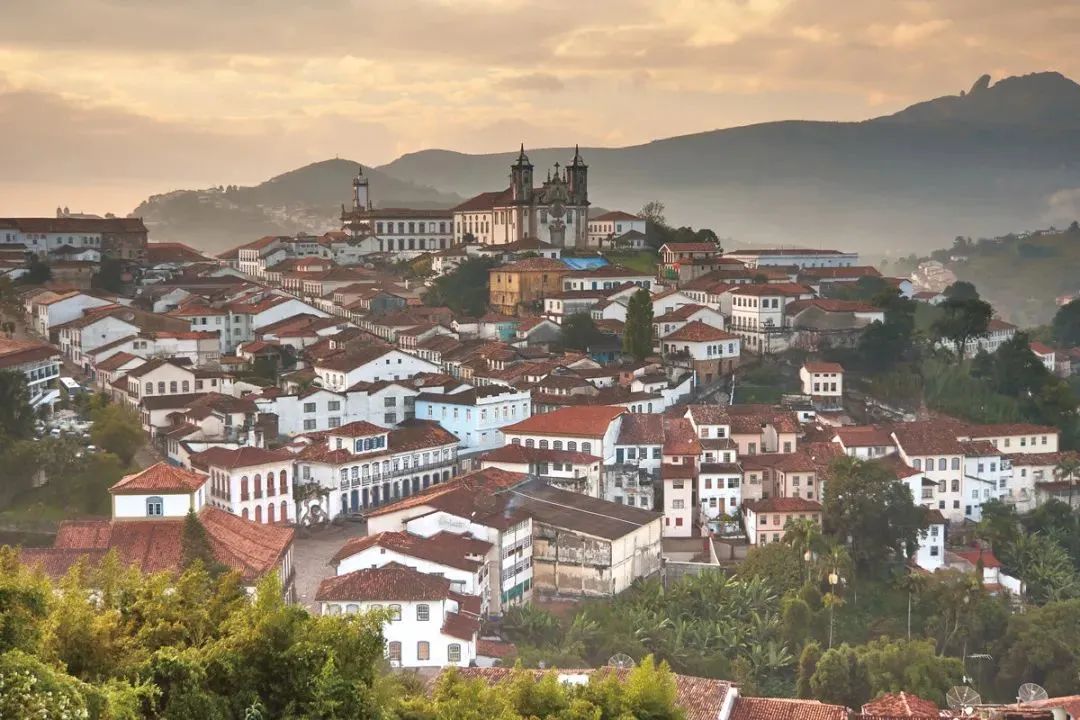
The Olutu -city Olutu is located in the Brazilian plateau, and the east and south are the high cliff walls. The ancient city is located on the slope of the Outures Mountain, built along the Vunir Valley, and has a layered beauty of the building.
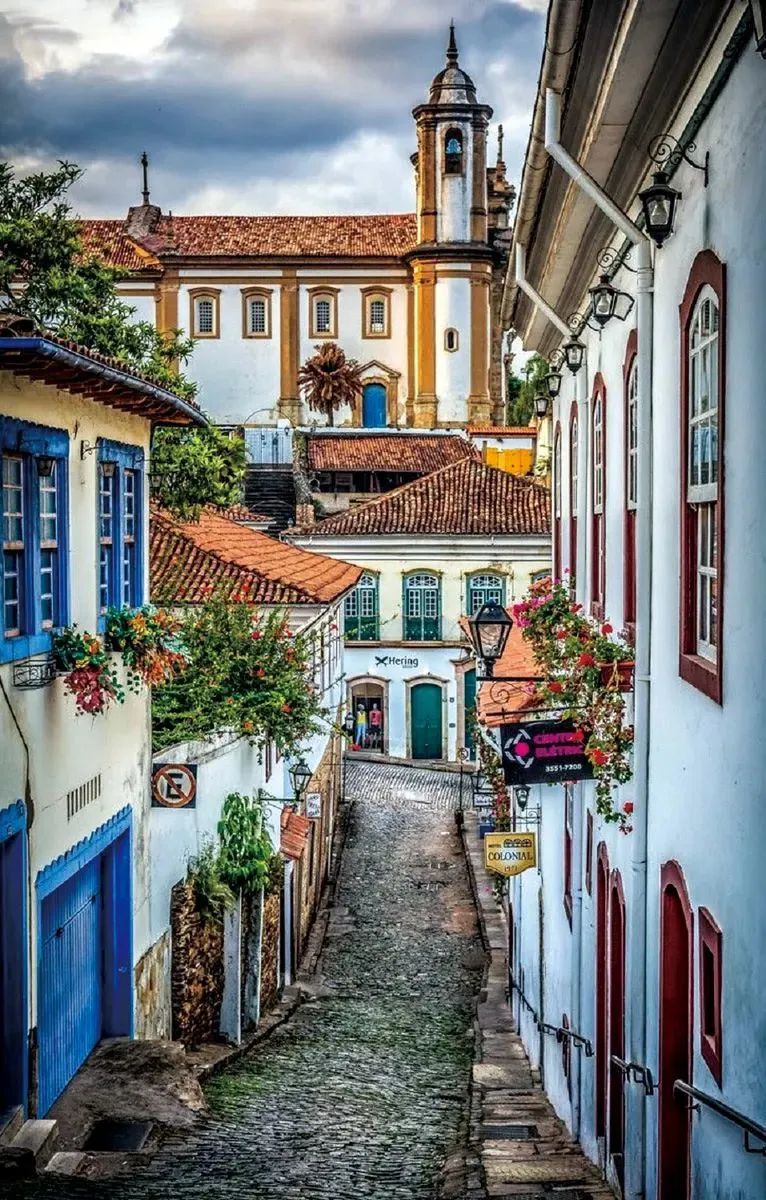
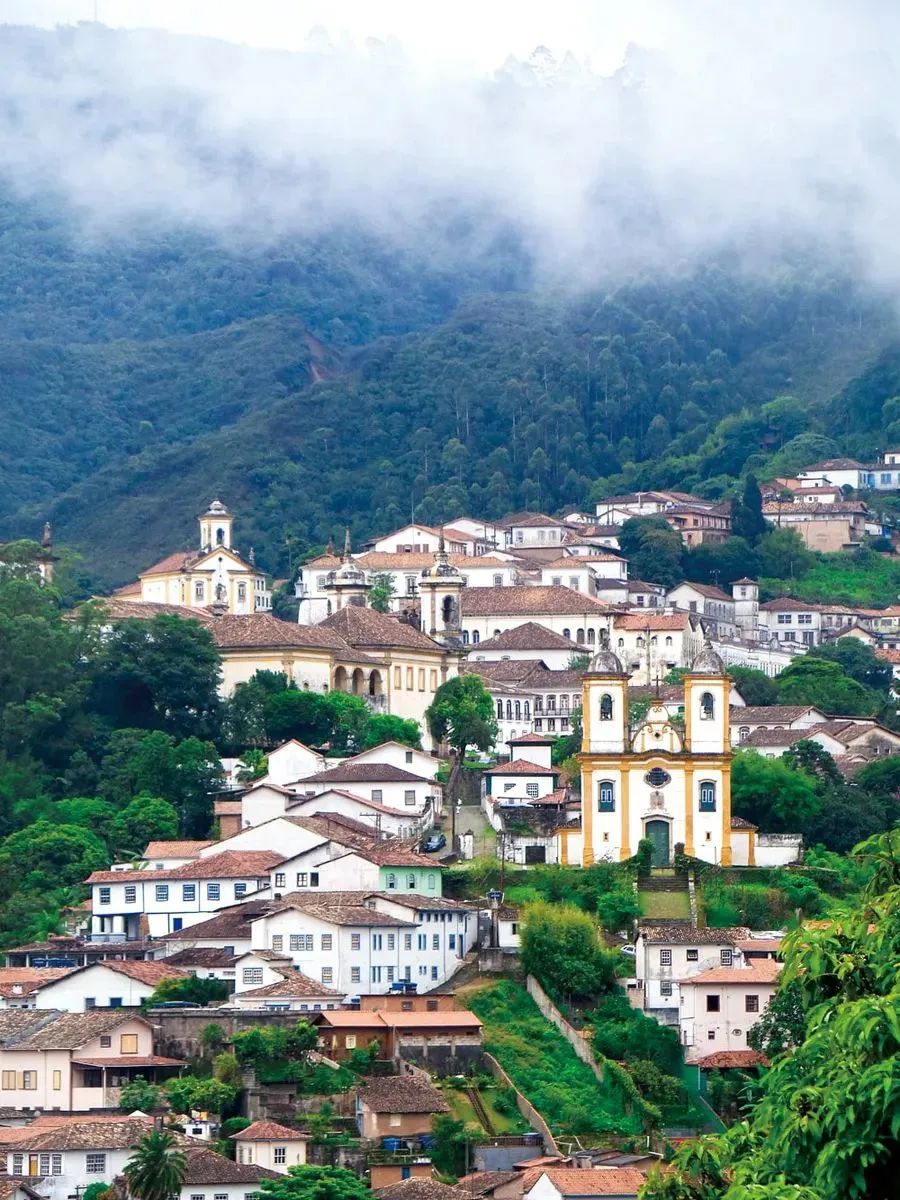
The builders of Heijin City respect for nature, combined with the local hills and landforms to build irregular urban styles. The streets are winding and undulating, the streets are narrow and deep, and the roads are paved with pebbles. Most of the houses are white bungalows or two floors, which are gorgeous.
Since Columbus arrived in the American continent, Europe has rumored that the "South American Golden Country" said that an expedition from Europe went to the hinterland of the new continent to find treasures. On April 22, 1500, Portuguese navigator Pedro Kabral arrived in Brazil and announced that the land was owned by Portugal. In the following 300 years, the Portuguese came here to settle, engaged in the harvesting of Brazil's mahogany, and gradually expanded to sugarcane planting and gold rush. Around 1690, a Portuguese expedition team from the Brazil coast entered the southeast hills came to Minaskilas. At that time, some people picked up some black stones when they took water from the river. The strange thing was that these stones flashed a little golden light in the sun. After careful inspection, they found that they contained high -quality gold.
The news of gold found in the southeast mountains of Brazil quickly spread in the world, and a large number of gold rushed people heard the wind. According to historical records, in the first half of the 18th century, the gold mining in Brazil caused at least three continents to migrate: in the Americas, the colonists who arrived in South America in the early days rushed to the place where the gold mines were in the gold mine from St. Paulo, Amazon's tropical rain forests; The Portuguese rushed to Brazil by boat and joined the team to develop gold mines. Mining urgently needed a lot of labor, so a large number of black slaves were sold from Africa to Brazil. With the settlement of a large number of people, people have established cities around the mountains, and the colonists bring the culture, customs and religious traditions of southern Europe. Oupretu came into being and gradually prosperous. At first it was called "Fucun", and later with today's name. "Ouprait" meant "black gold" in Portugal. Because the local gold surface was black, the city was named "Black Black Jincheng. As for the mystery of black, people gradually send the surface of the iron oxide in cash ore to make it darkened.
It is recorded that the mining volume of Black Jincheng was amazing during the heyday, and other small gold mines, Brazil's gold output once accounted for 70%of the world's total output. A large amount of gold is transported from Black Golden City to Portugal. On the mountain road of more than 500 kilometers, the golden team of gold was endless. French anthropologist Clort Levi Strauss recorded in his book "Tropical Tropical": " Falling hoof is enough to feed a group of people. "The population of Heijincheng once exceeded Rio de Janeiro and New York, becoming the largest and richest city in the Americas at that time.
However, gold is not endless. After more than a hundred years, the veins near Heijin City were finally collected, and people attracted by gold quickly dispersed, and the construction of the city stopped abruptly. The scenery of Heijin City is no longer, and the city style stays at the bustling moment of the 18th century.
Black blood and tears under the glorious brilliant
Hundreds of years later, the black golden city in people's eyes was quiet and comfortable. The average altitude of more than 1,000 square kilometers of Black Golden City is about 1100 meters. The antique streets are undulating with the level of urban terrain, and the residential and tall cathedrals are staggered. Against the backdrop of green mountains and green trees, it presents a simple and beautiful scenery. There are not many pedestrians on the street, cars are slow, and the crafts and gem shops along the street are full of dazzling. The whole city seems to be wearing a resort in the 18th century -now it is a city -based city. There is no colonial city in Brazil to be so complete like Black Golden City. The building structure in the city is still mainly stones, soil blocks and wooden strips. Baroque and Rococo style buildings have been new for a long time. Probably because cities pay attention to exterior wall maintenance and painting, most buildings are bright and bright. Many buildings, paintings, and sculptures in Heijin City have maintained the style of colonial periods. The exquisite and colorful doors and windows decoration is a major feature of the city and witnessed the wealth of the year.

The art performers on the street make the city full of romance
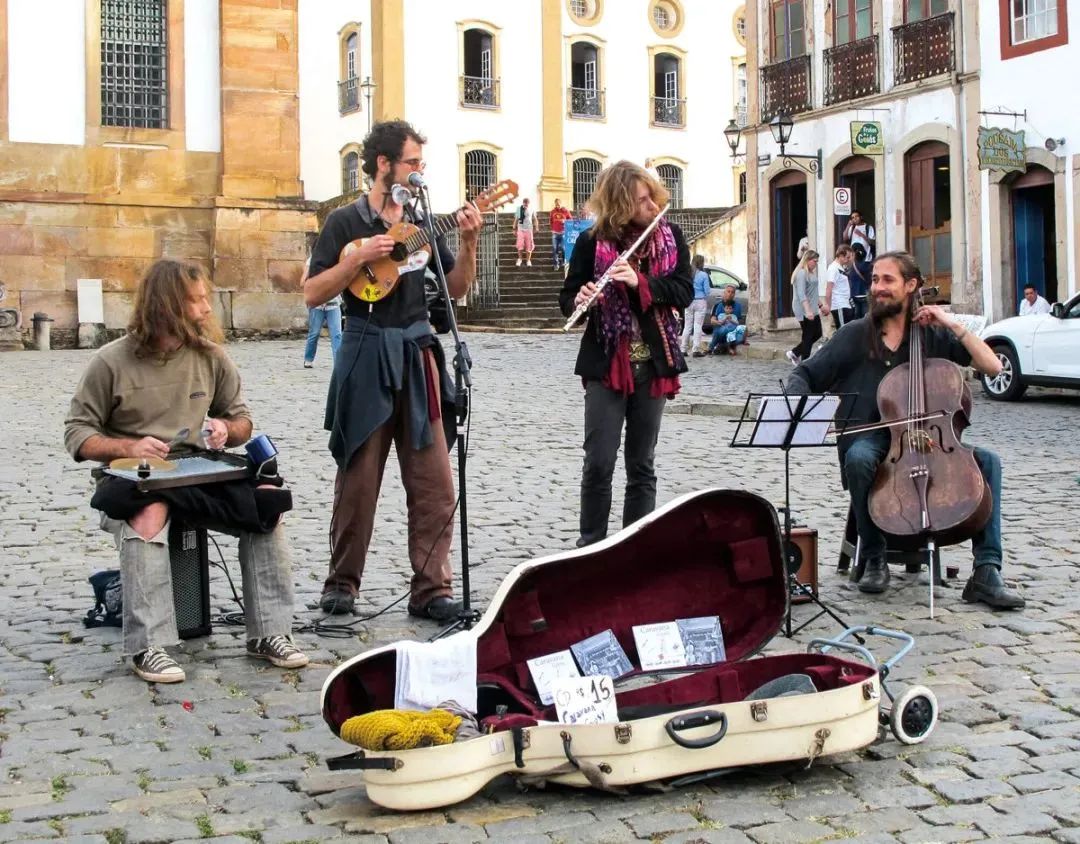
Kabrall said: "Black Golden City is a place that nourishes eyes, soul and spirit. It is beautiful and mysterious in the embrace of mountains. This is where it is attractive." Europeans plundered a lot of wealth from here and built. After a large number of churches, the exquisite architecture and the emphasis on materials are amazing. Oupretu has 13 exquisite design and luxuriously decorated churches and 9 small churches. Among them, Antônio Francisco Lisboa, a sculptor and architect, hosted the design and construction of the Igreja de São Francisco De Assis; Manuel Francisco · · Manuel Francisco Lisboa hosted the Igreja de Nossa SenHora Do Carmo and Antonio Dias Mother Senhu Da CONCEIçãO DE Antônio Dias.
The Church of Asian Shengzji is a Catholic Church of Lococo. It was built in 1766 to 1812. There is a gorgeous statue above the thick green wooden door, and there are many gold -plated wood -plated products inside the church.

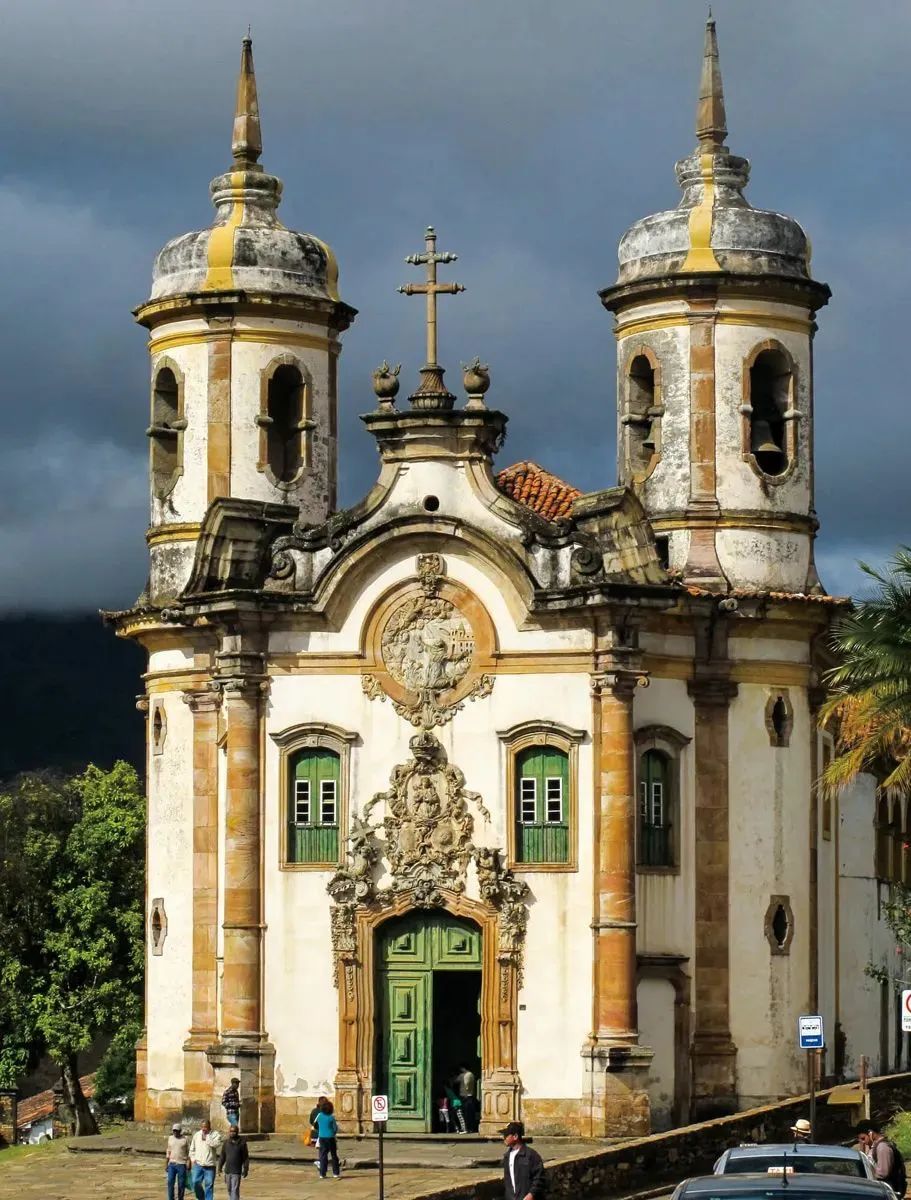
Looking at the beauty of the mountains from the hotel, the highest point at.
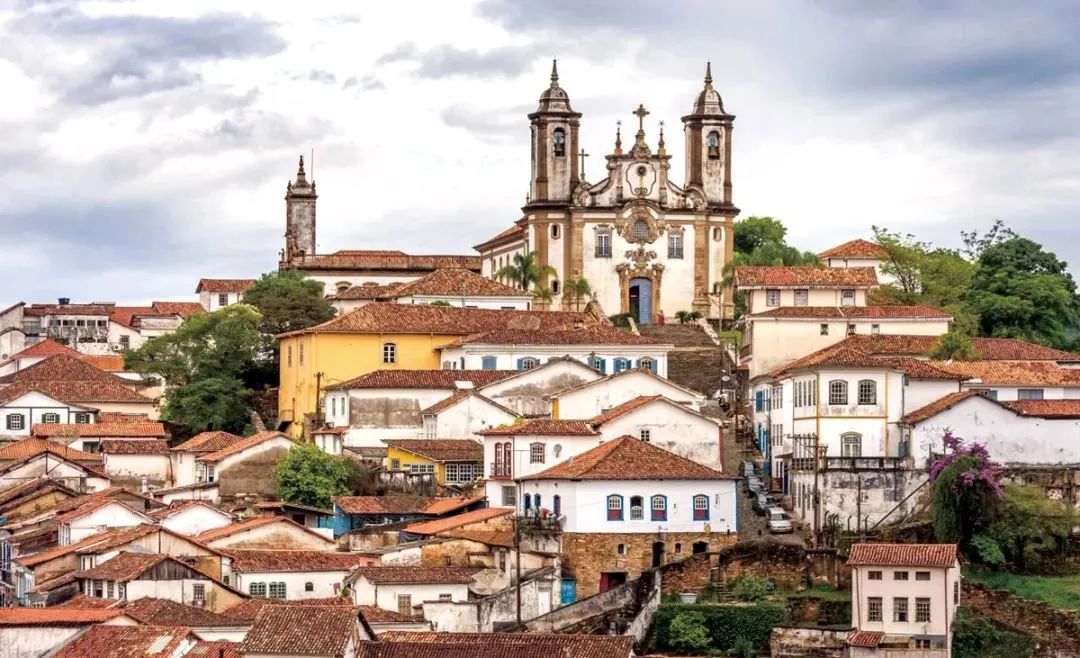
I was most impressed by the Basílica Menor Nossa Senhora Do Pilr. It is said that only 400 kg of gold is used to decorate the main hall. The door column in the front of the church is similar to that of the Church of St. Dortomeniko in Palermo, Sicily. Inside the church is a typical Portuguese national style, which is extremely luxurious, and a little golden light in all corners. The church has been expanded since 1712. It is not only the statue of the Virgin, Christ and the Saints made by gold. Even the flowers on the wall and the top murals are decorated with gold powder and gold foil.
The Cathedral of the Piral Lady was built from a raising fundraising of the wealthy family in the city at that time.
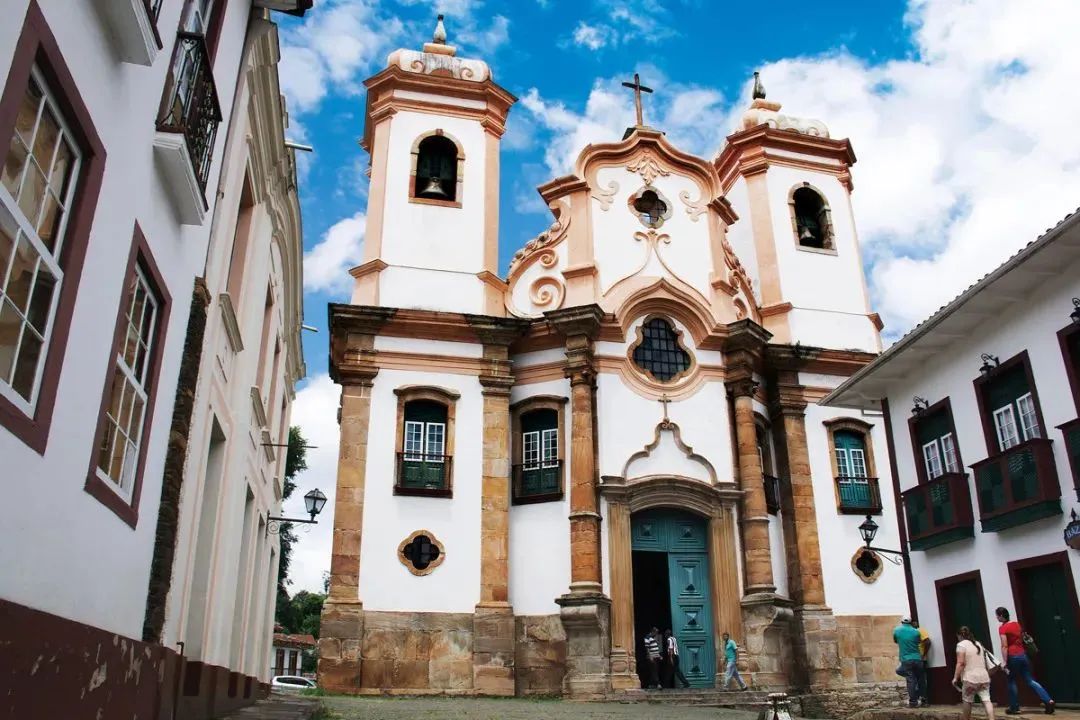
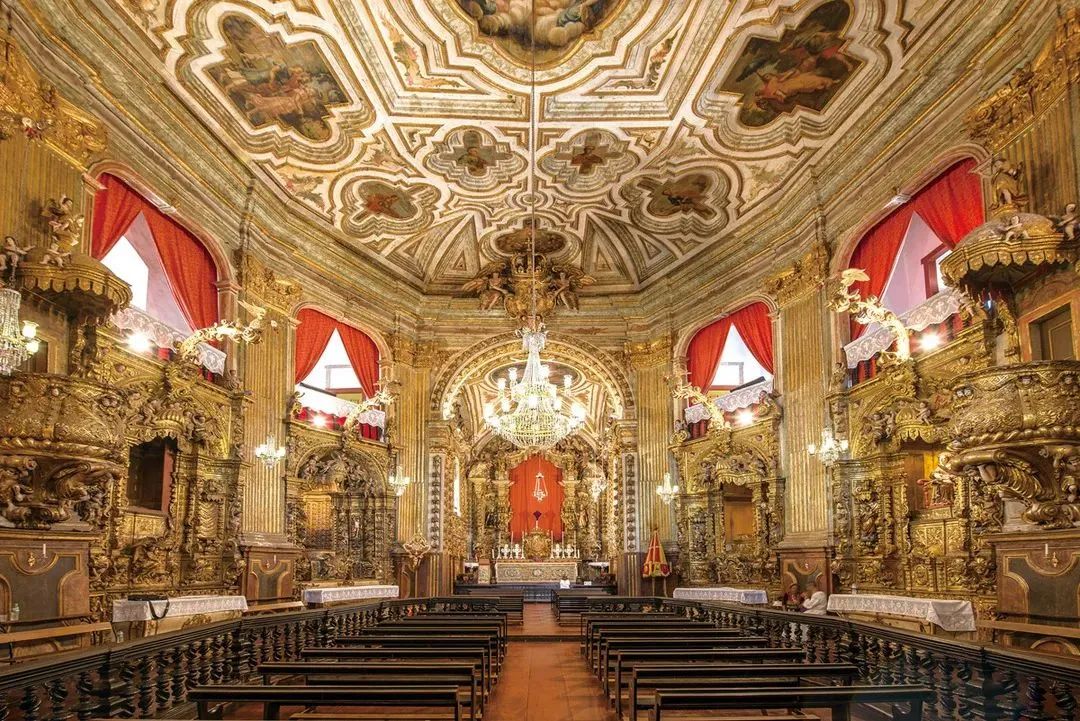
The locals deliberately told me that although everyone knew that there was gold in the church, there were never thieves patronized for hundreds of years. At that time, I understood that his words were that Heijin City had good public security and simple folk customs, but friends who understood the history of Brazil said that they should consider religious sense. The earliest Europeans who entered Brazil in history were mostly missionaries, and slaves from Africa were often missionary and converted to Catholicism. From the 17th to 18th centuries, the Catholic forces of Brazil were strong. At that time, the church built was extremely gorgeous, full of mysterious and solemn awe. To this day, more than 90%of the people in Brazil are still Catholics. In such an environment, the idea of stealing churches is probably difficult to breed, let alone to act. However, what impressed me most was not the Virgin on the main table, but the angels on the side of the wall. The angels in Black Jincheng are very special, not only white skin and blue eyes, but also black skin and black eyes. Angels with two skin tone harmoniously guarded on the top of the golden wall, which may be a miracle hundreds of years ago.
The Black Rose Curvi Master of the Virgin (Igreja de Nossa SenHora Do Rosário Dos Homens Pretos) was founded in 1715. The arc -shaped facade led it in the Baroque architecture in Menasglas. The church was built by black slaves, and the interior was relatively simple, and the angel with black skin.
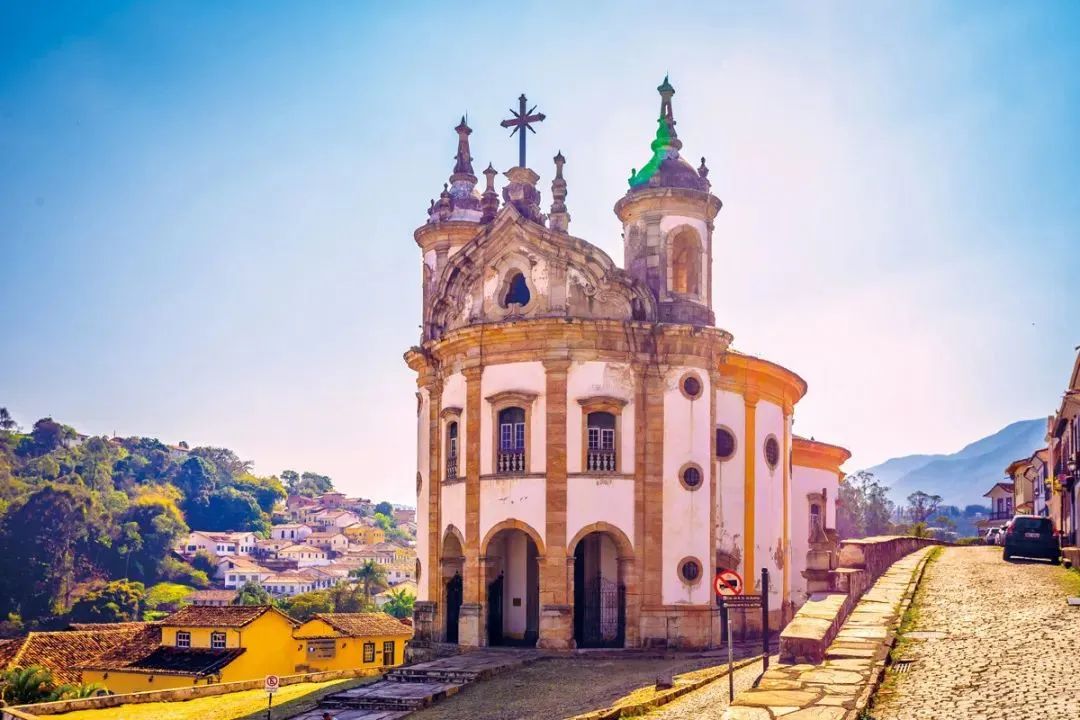
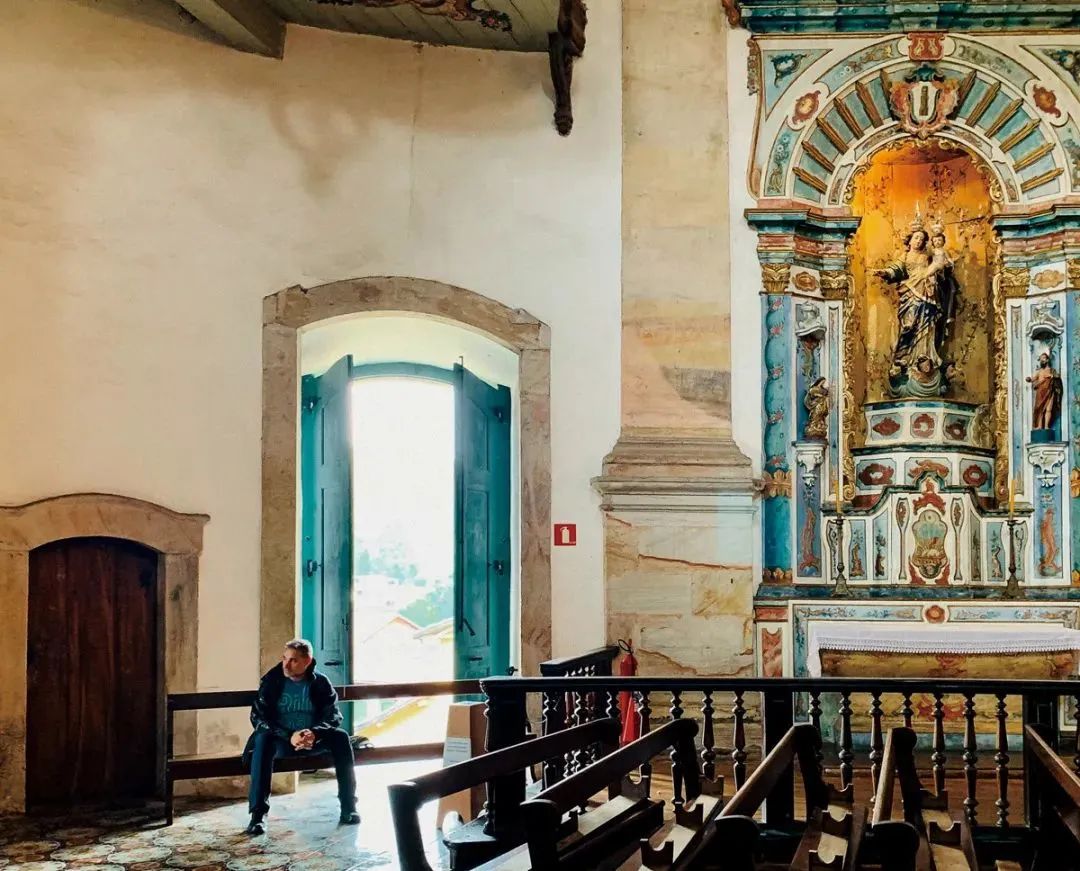
The Mother Antonio Dias was built from 1727 to 1746. There were 8 decorative altars in the inside. The church designer Antonio Francisco Lisbon and his father Manuel Francisco Lisboa were buried here. Antonio is one of Brazil's most prestigious architects and sculptors; he is a mixed race of black slaves and white people, and is known as "Aleijadinho" ("Little Grave") because of illness. Leaving an immortal masterpiece for Black Jincheng.
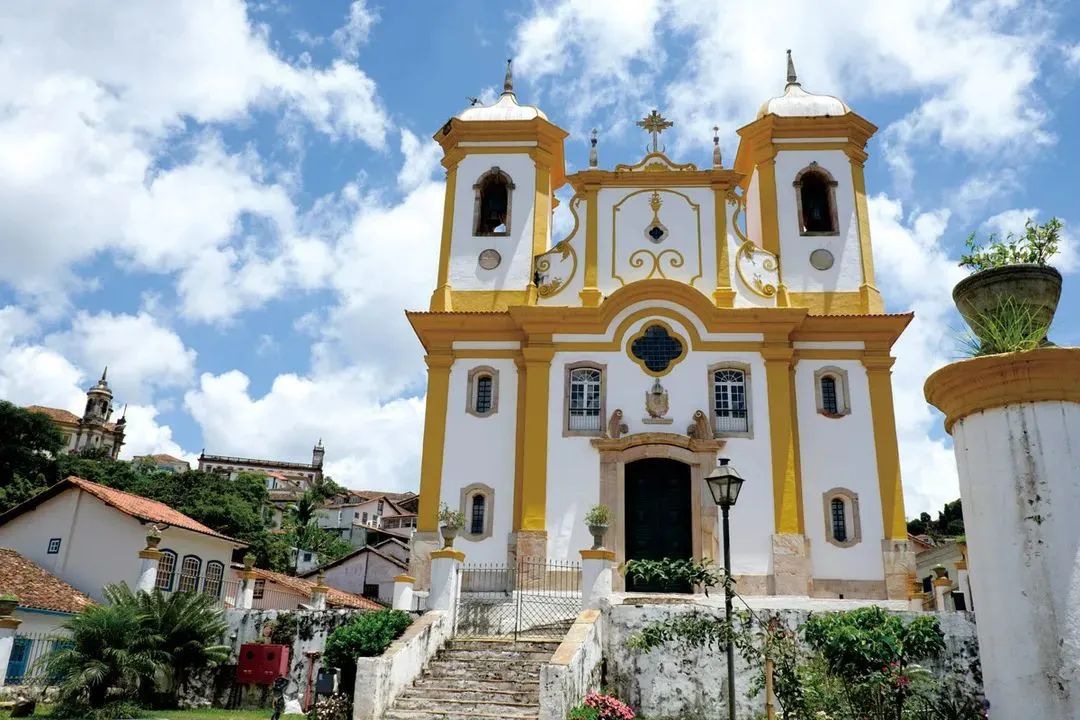
The Igreja de São Francisco de Paula was built in 1804 to 1898 and was the last church built during the colonial period. There are often markets near the Church of Saint Francis, which shows local specialty handicrafts.

During the heyday of Heijin City, tens of thousands of black slaves in the city have so far preserved the basement where the slaves lived. People who have been there described this: "Entering the basement, the coolness sweeps it, and changes the luxurious and magnificent of the ground building. Only the rough stone walls are covered with cold water droplets. There is no rectification at all. There are several small windows with iron railings at the high place of the exterior wall.
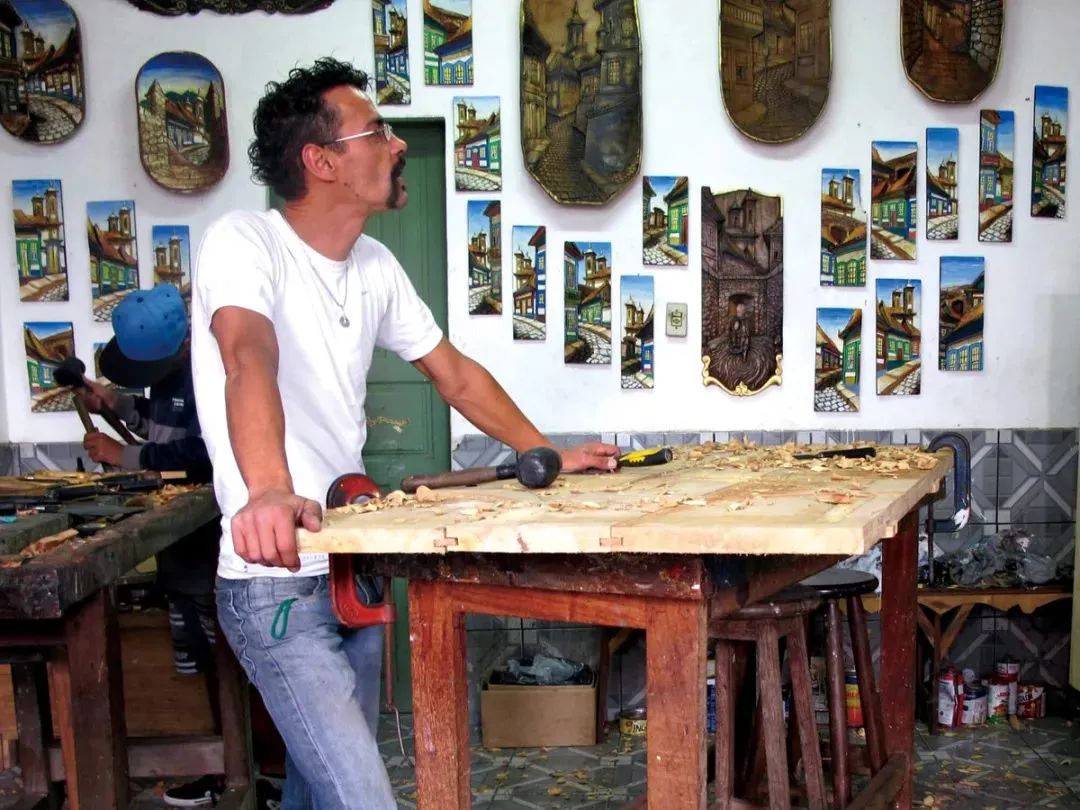
In the second half of the 16th century to the second half of the 18th century, a large number of slaves were shipped from Africa to the New World from Africa. For Black Jincheng, slaves are working hard in the mine. During the heyday, the population of Heijin City had exceeded 100,000, of which black slaves accounted for most. Most of the luxurious and beautiful buildings and churches here are from the hands of black slaves. They used hard -sweat and life to exchange their former golden age, and also created their own legend.
The Casa Dos Contos not only collects massive ore and gems, but also shows the black slave house of Black Jincheng, including the scales used by the slave to the slave, campaign, leather whip and other torture tools, cooking utensils, religious utensils, etc. Essence
"MINA DA PassageM" is one of the largest gold mines for tourists around the world. It has been mined more than 30 tons of gold in the 18th century.

The corner of Heijin City has a pit named "Chico Rei". There is a black chief statue wearing a golden crown in the pit. It is said that his name is Galanga. Slave seasons plundered Chirley's tribe in the Congo, and he was sold with the clan as slaves. In order to motivate slave work, the local gold mine owner allows them to keep a small amount of gold after paying a certain amount of gold. Chico's wisdom and luck made him accumulate enough money. He dug 25 tons of gold from 1702 to 1776, redeemed freedom for himself and his family, and bought the entire gold mine. He later "bought" the stored gold to "buy" 43 people, becoming the African king of the South American continent. Today, the gold mine that Chicole has worked has been named "Kokrey". Although the authenticity of this story is difficult to verify, it is widely circulated in Brazil.
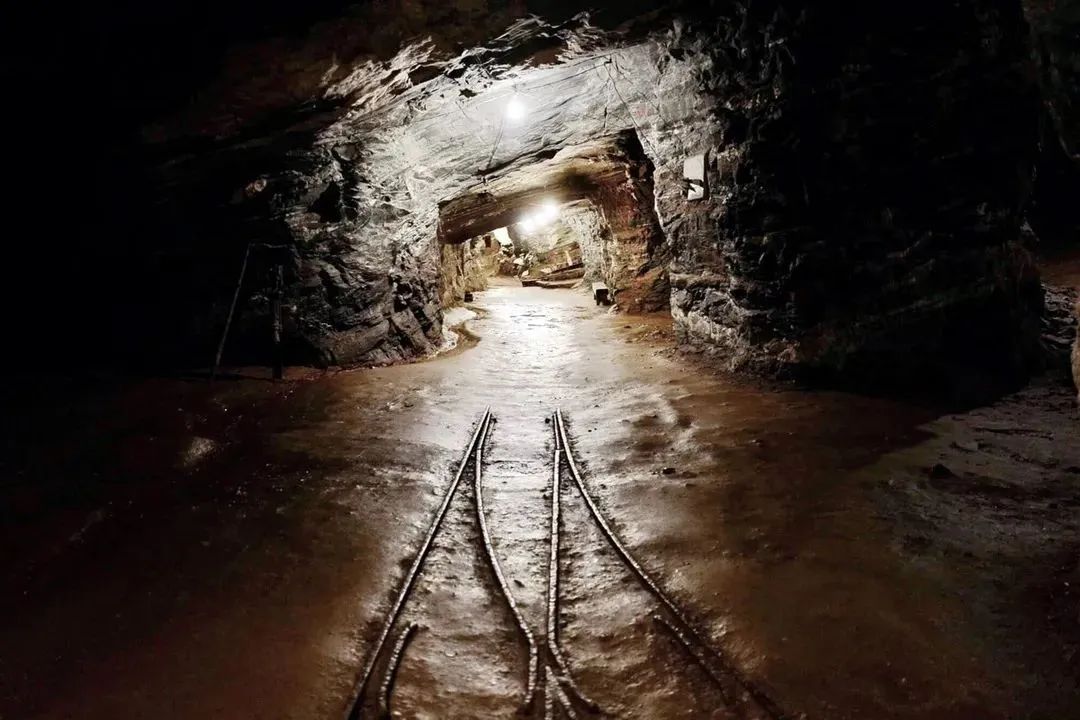
Statue of Chicore at the entrance of "Chico Mine"
Wearing a helmet, I followed the tour guide into the Qikole pit. The lights are dim, the rocks are humid, and the tunnels are twisted. From time to time, there are some forks that explore the depths of the mountains. It is said that this cave has a total of 8,000 square meters, which is difficult to calculate the length, and there are criss -crossed caves everywhere. The surroundings are quiet, only the sound of dripping water. The tour guide pointed at the top left, and I found that there was an upward entrance to more than 1 meter of heights. This hole does not have too many artificial carving, and the steep rock veins are clearly visible. We were together with the caves that had been crawled over a dozen meters long, and came to a slightly wider hole, and finally we could straighten their waists. There is a smaller and dark cave entrance deep in the cave. The guide said that it led to another gold mine and passed through three underground lakes. These holes were chosen by slaves. Seeing the day from the gold mine, I noticed that there was a small statue of the Virgin at the exit, and the face of the Virgin was also black.
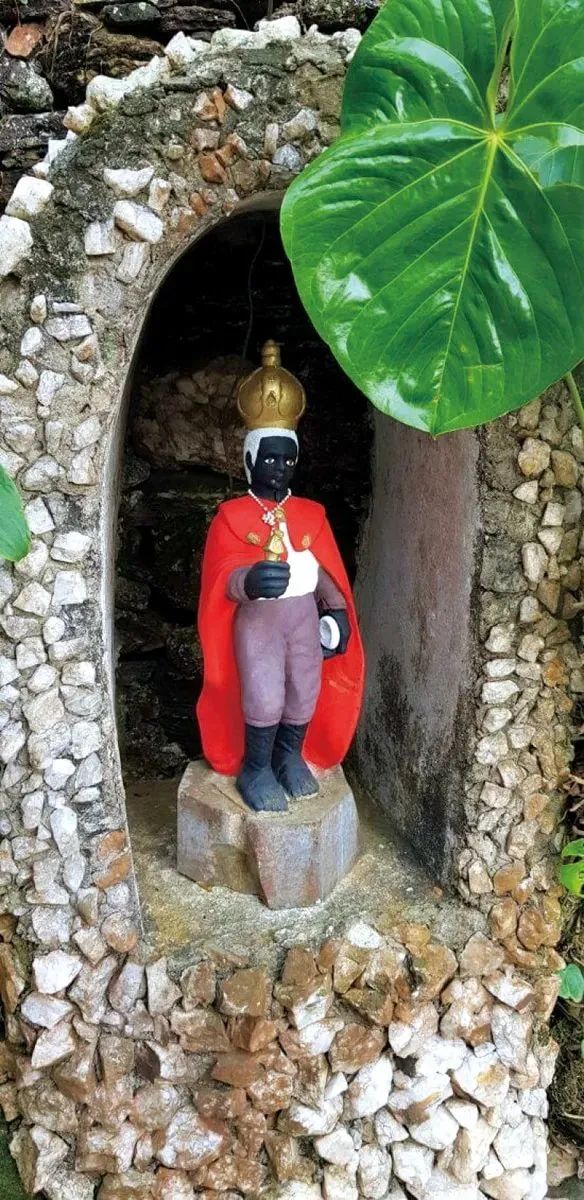
Nowadays, there are more than 3,000 pits in Heijin City, which are mostly covered by weeds. Many of the pit have been opened to the public and can be visited by a small train. Most of the pits are humid and narrow, and there are still places where golden sand and stone walls -black slaves used to place candles and idols. The old mine site for tourists usually set up a golden golden pool, preparing a few traditional tools for tourists to try their skills. The pond is a real gold ore sand, and the gold that is found can be attributed to itself, but there is only one opportunity.
Shining Brazil Light
Tiradentes Independence Plaza (also known as Independence Square) is the real heart of Black Golden City. It is named after the name of the Pioneer of the Brazilian National Independence Movement in 1789 and witnessed the past.
Independence Square is the center of Black Jincheng, surrounded by museums, restaurants, gem shops and hotels. At the top of the monument in the center of the square is the statue of the Brazilian national hero Tirandonteus.
In the 18th century, Gold brought glory to Heijincheng, but there were many conflicts and assassinations of forces due to interest disputes. According to literature, the scope of Brazil's mining of gold was more than 2 million square kilometers. Portugal has set up a casting place for monopoly colonial gold, prohibiting gold powder from circulating on the market, and stipulates that the taxes paid each year must not be less than 1,500 kg of gold. The dissatisfaction of Portugal's dissatisfaction on Portuguese residents of Monasglas has risen, and independent consciousness is increasingly looking up.
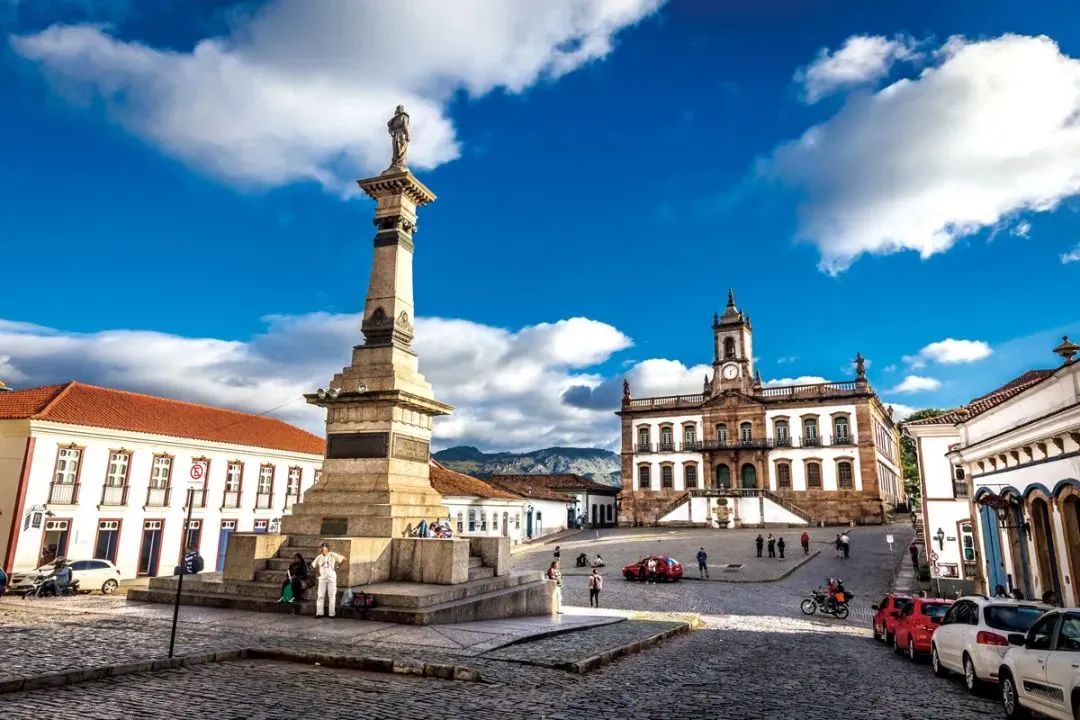
In 1789, J. J. DA Silva Xavier, a subordinate officer of Minas Garas, formed a one of the knowledgeable youths, subordinate officers, and Progressive priests under the environment of anti -Portuguese compression environment. Revolutionary organizations, conspiring the colonial rule of Portugal, the establishment of the Republic, and selected San Ruon Delrey, the capital of Minas Galas, as the capital. They sent people to Rio de Janeiro, Sao Paulo and other places to carry out revolutionary activities, and planned to defeat the Governor's Guard on the day when the colonial authorities formally pursued the old tax, and then captured Governor Barbasa. Unfortunately, due to internal personnel reports, Shaville was arrested in May 1789, and three years later in Rio de Janeiro. Although the conspiracy failed this time, it marked the beginning of the Brazilian independence movement. On April 21, the death day of Shaville is still a national holiday in Brazil. The top statue of the Central Monument of Independence Square is the heroic sacrifice "Brazilian Father". He is called "Tirader" because of good treatment of dental diseases. The nickname is wider than his real name. Black Jincheng witnessed the golden hair of the colonists, the South American life of the black slave, and the origin of the Brazilian independence movement. In 1980, it was included in the World Heritage List by UNESCO. Historian Erin Kabrall said that many people do not know the value of freedom and abandon freedom like (xǐ); and Heijin City is a place where people remember the past and even have awareness of their roots. The history of the past and political figures for the past and disregarded the history of freedom.
On the day of bidding farewell to Heijincheng, when I checked out at the front desk of the hotel, I said that I had sent a fax to China during her accommodation. Please settle the service fee for this part together. The waiter at the front desk was surprised, "Is it to China? We still have a fax to China for the first time." She smiled very brightly and waved his hand and said, "This one is not charged." To this day, when I was sitting in the grid between Beijing's high -rise buildings and writing this article, her smile still clearly appeared in my mind. It must be acknowledged that half -life runs, and many strangers have encouraged me, including the girl in Black Jincheng.
This article contains the "World Knowledge Pictorial" magazine 2022, No. 9
Editor in charge: ZAN
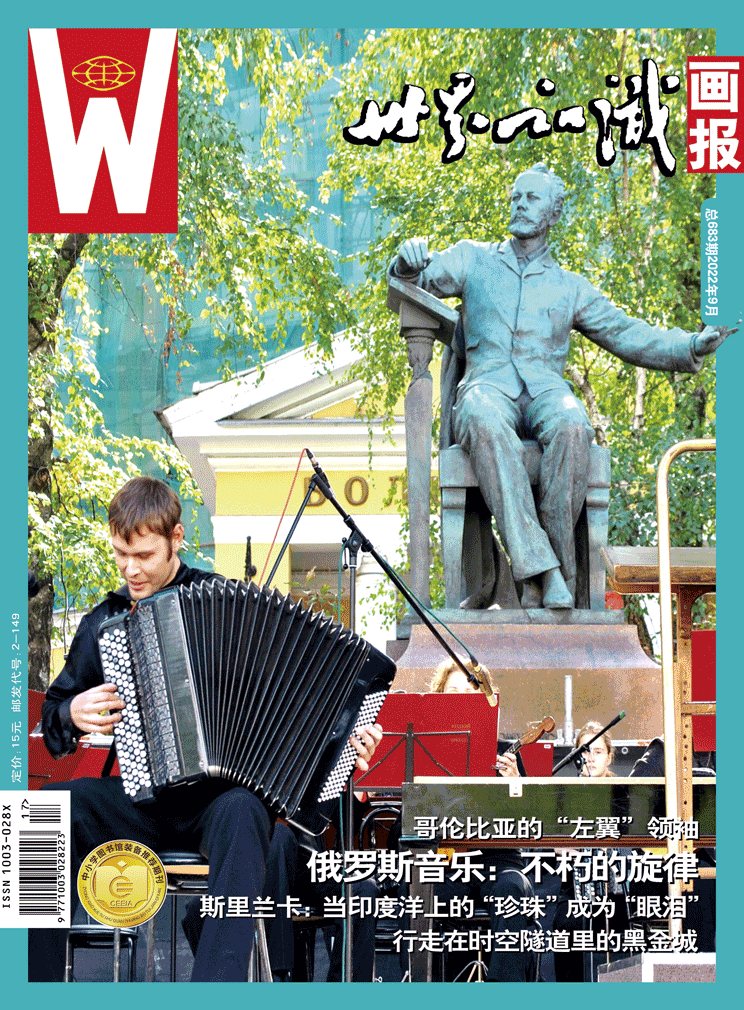
- END -
Henan carried out the review of the elderly friendly community in 2022
Newspaper (Reporter Feng Jincan Correspondent Zheng Dongdong) On June 13, the reporter learned from the mobilization meeting of the elderly friendly community review work in 2022 in Henan Province tha
Citizens of Chengdu! Citizens outside the "5+1" area are not allowed to drive on the city for the time being
Chuanguan News reporter Zhang TingmingOn September 16, the reporter learned from the Chengdu Traffic Management Bureau that the current Chengdu epidemic prevention and control is in the critical perio